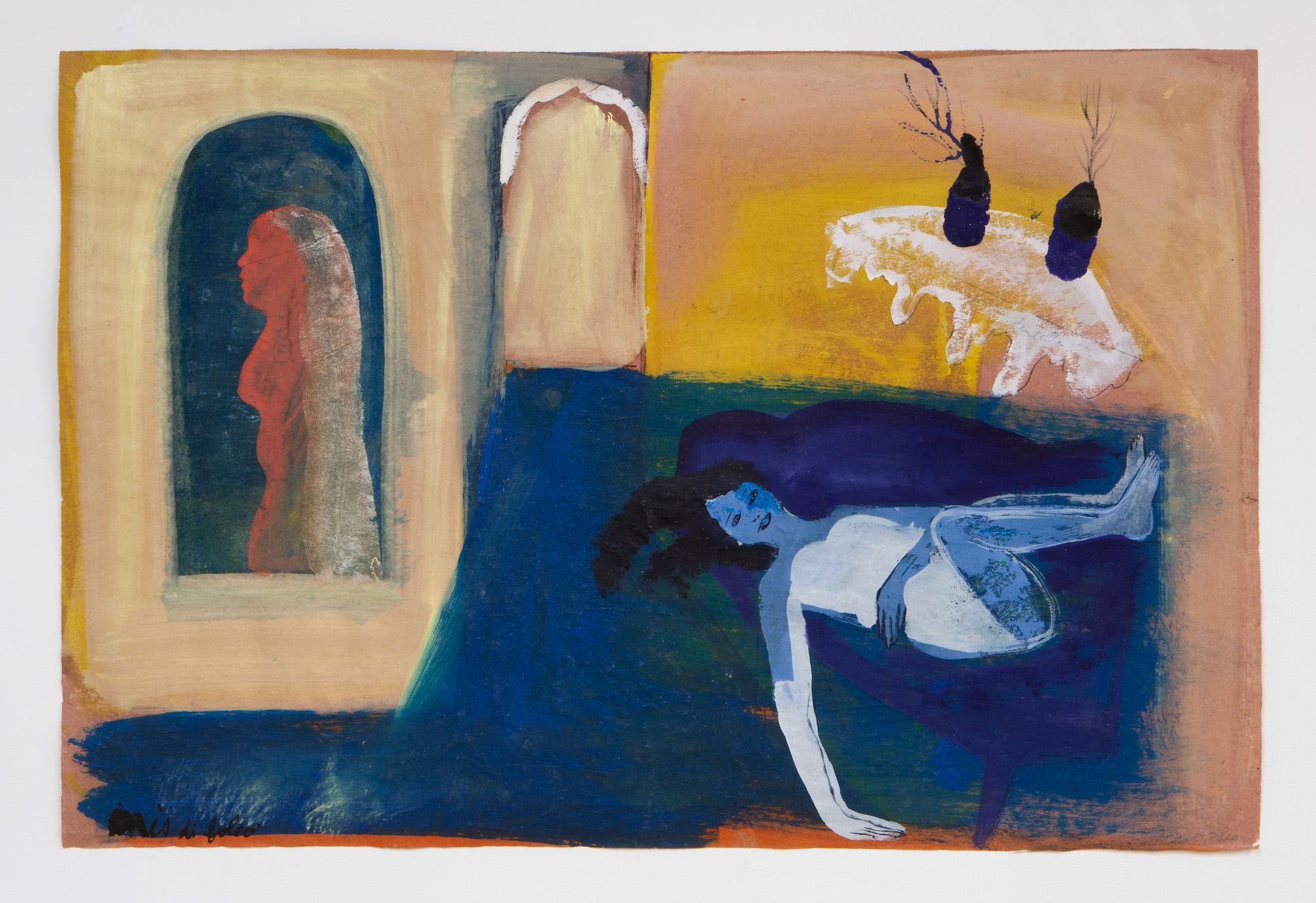“We know that most gatherings of artists, curators, dealers, and critics at museums, galleries, art societies, and socials are without us,” Emma Amos wrote in a 1990 essay for M/E/A/N/I/N/G magazine, lamenting how Black female artists have long been denied access to the institutional resources available to their White counterparts. “DON’T YOU MISS US WHEN WE’RE NOT THERE?”
Though forced by necessity to create grassroots organizations, these artists created meaningful work in these creative coalitions, challenging the status quo by platforming marginalized voices and redefining what it meant to be an artist. Their continuing legacy is the subject of Deli Gallery’s latest exhibition, which pays tribute to the revolutionary women who laid the groundwork for contemporary artists.
Shared views between these artists are immediately evidenced by the show’s curation. In one corner of the gallery, we are met with two images created decades apart that reframe Black female beauty by challenging historical representations, opening up a powerful dialogue on the evolution of the subject. On the right is Brianna Rose Brooks’s “Four Patron Saints” (2017), a monochrome image of Black hair models, who embody monastic reverence and dedication as they float in space in their hazy blue glow. On the left is Amos’s “Reflections on an Odalisque” (1980), a pair of etchings with aquatint that introduce a different perspective to the reclining nude by casting a Black woman where there would traditionally be a White subject, and showing her from both front and back.

Though shown on opposing walls, Vivian Browne’s “Little Men #90” (1967) parallels Ines Di Folco’s “Enfant Sorcier” (2012) in their gestural depictions of ghoulish men and their provocative takes on immaturity and power. Browne, renowned for her sometimes unflattering depictions of reality and abstracted paintings, was a vital member of various influential collectives and arts groups in the 1960s and ’70s, including the Heresies Collective, Robert Blackburn Printmaking Workshop, SoHo20 Gallery, and the Feminist Institute. In many of these groups, Browne worked alongside Amos and Camille Billops (also included in the exhibition). As part of her Little Men (c. 1967) series, she ridicules the anger and frustration of middle-aged White men by infantilizing them. In contrast, Di Folco’s “Enfant Sorcier” (2012) portrays a young boy with a blue snake around his neck, holding up the carcass of a wild cat. Juxtaposing the infantilization of adult figures with the heroization of a young boy, the show invites viewers to reconsider the boundaries of power, violence, and maturity.
Linda Goode Bryant, founder of one of the most influential Black art community centers, Just Above Midtown, once said that making art is “uniquely human,” adding that it “enhances who we are and how we relate to one another.” This sentiment is vividly illustrated in DON’T YOU MISS US?, which not only honors the trailblazing women who paved the way, but also underscores the ongoing dialogue between past and present artistic expressions, affirming that art remains a powerful tool for cultural and social transformation.

DON’T YOU MISS US? continues at Deli Gallery (36 White Street, Tribeca, Manhattan) through August 16. The exhibition was organized by Alyssa Mattocks and Ethel Renia.

